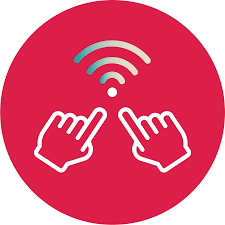In an increasingly digitized world, the concept of community building has transcended geographical boundaries, extending into the virtual realm. Digital inclusion, the ability of individuals and communities to access and effectively utilize digital technologies, plays a pivotal role in shaping and strengthening communities. From fostering social cohesion to promoting economic empowerment, digital inclusion is a cornerstone of modern community development efforts.
Breaking Barriers to Communication: One of the fundamental ways digital inclusion contributes to community building is by breaking down barriers to communication. Through digital platforms such as social media, online forums, and messaging apps, individuals can connect with others regardless of physical distance. This enables the exchange of ideas, sharing of experiences, and formation of relationships that transcend traditional boundaries.

Access to Information and Resources: Digital inclusion empowers communities by providing access to a wealth of information and resources. From educational materials to job opportunities, healthcare resources to government services, the internet serves as a gateway to essential resources that can improve quality of life. In communities where access to traditional resources may be limited, digital inclusion can bridge the gap and ensure equitable access to opportunities.
Empowering Marginalized Groups: Marginalized communities, including low-income individuals, people with disabilities, and rural populations, often face barriers to accessing digital technologies. By promoting digital inclusion initiatives tailored to the needs of these groups, communities can empower them to participate more fully in society. This can include providing digital skills training, subsidizing internet access, and ensuring that online platforms are accessible to all users.

Fostering Civic Engagement: Digital platforms have become powerful tools for civic engagement, allowing community members to participate in democratic processes, advocate for social change, and hold institutions accountable. From grassroots movements organized through social media to online petitions and forums for public discourse, digital inclusion amplifies voices and facilitates collective action within communities.
Promoting Economic Development: In an increasingly digital economy, access to digital technologies is essential for economic participation and growth. Digital inclusion initiatives can stimulate economic development by providing entrepreneurs with access to online marketplaces, enabling small businesses to reach broader audiences, and facilitating e-commerce transactions. Additionally, digital skills training programs can equip individuals with the expertise needed to succeed in the digital workforce.

Challenges and Considerations. While the benefits of digital inclusion in community building are clear, there are challenges that must be addressed to ensure equitable access and participation. These include addressing the digital divide, which encompasses disparities in access to technology, internet connectivity, and digital literacy skills. Additionally, concerns related to privacy, digital security, and online harassment must be addressed to create safe and inclusive digital spaces for all community members.
Digital inclusion is not merely a matter of access to technology; it is a fundamental component of modern community building efforts. By breaking down communication barriers, expanding access to information and resources, empowering marginalized groups, fostering civic engagement, and promoting economic development, digital inclusion strengthens the social fabric of communities and paves the way for a more inclusive and equitable future. As we continue to navigate an increasingly digital world, prioritizing digital inclusion initiatives is essential for building thriving and resilient communities.




